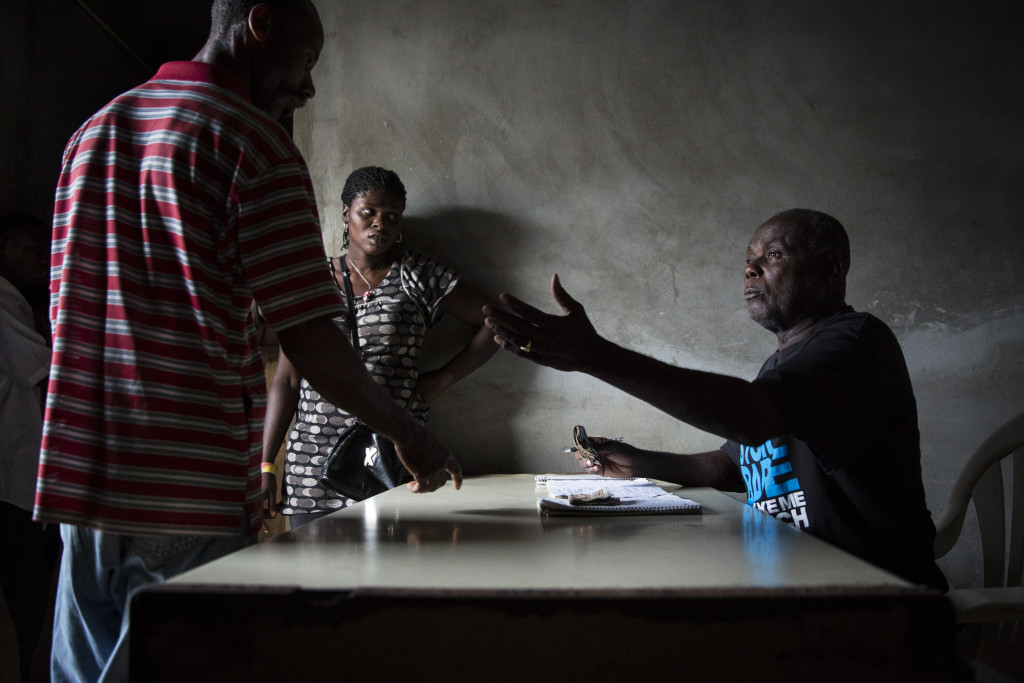“This country is a hot country. Everyone needs ice.”
True words spoken by Renold Pierre Paul Saphyr, who just happens to be the manager of the Usine Glace ice factory. Where there is no electricity, there are few refrigerators to keep things cold, so people buy ice: big blocks, little blocks, even small chunks, carried in sacks, coolers and plastic bags.
 Ice man Renold Pierre Paul Saphyr collects money from his customers. (Photo By: Garrett Hubbard)
Ice man Renold Pierre Paul Saphyr collects money from his customers. (Photo By: Garrett Hubbard)The ice factory—which also has a water treatment system—looks old and unkempt. The largest room resembles an unfinished basement with a large, well-used ice chest about 20 feet long, 8 feet wide and 7 feet high. Outside, two diesel-powered generators surrounded by weeds and piles of dirt run at night to power these ice-making giants.
The largest block of ice costs about $3 U.S. For $1 U.S., you can buy five gallons of water in a large jug, or for a few cents, a small plastic bag of water which you drink from by ripping a small corner with your teeth.
Saphyr drives an old blue Jeep Cherokee and walks and talks like the boss—no smiles, no laughs, all business. On Saturdays he sits behind a desk to collect money from people who line up to buy ice, water, and also frozen bags of juice to sell at the market. It’s hot, remember?
His friends call him Stevie Wonder, as he is a musician at night. Saphyr claims to have 27 children. When we were taking his picture, I asked the translator to tell him to think about his extended family. Finally, a smile. The ice man is popular, it seems.
Read the entire series of dispatches from Haiti on NRECA International and the people it serves.
This story was originally published on RE Magazine.